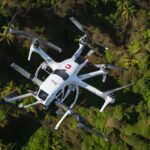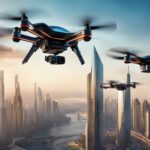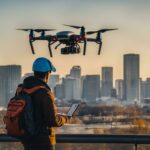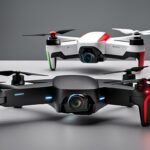The DJI Mini 2 SE and Mini 3 are micro drones that offer an incredible aerial photography and videography experience. In this article, I will compare the two drones in terms of design, camera quality, obstacle avoidance, transmission range, flight time, intelligent flight modes, pricing, and availability. Whether you’re a beginner or a professional, this comparison will help you decide which drone is the right fit for your needs.
Personal Review of the DJI Mini 2 SE vs Mini 3
Being a passionate fan of drones and maintaining my blog, I’m always on the lookout for advanced drone technology. Recently, I encountered a in dilemma choosing between DJI Mini 2 SE and Mini 3. It felt like an exacting decision yet thrilling journey to dig into both drones’ features.
For quite a while now, I’ve been favorably using DJI Mini 2 SE. Its small-scale form factor coupled with its lightweight framework has proven very beneficial when frequently traveling. The ultra HD resolution along with its superior gimbal stabilization has immensely enhanced the quality of footage for my vlogs. As far as flight duration goes, it comfortably lasted me over half an hour which was perfect considering most of my trips or recordings are fairly quick ones. The gadget’s capacity to withstand wind speeds ranging from about thirty kilometers per hour while ensuring video footage maintains its stability is truly noteworthy.
Curiosity was piqued when DJI Mini 3 hit the market, causing me to ponder over an upgrade. It proudly boasted superior amenities such as a top-tier sensor, extended flight duration, and escalated wind resistance capabilities. The intriguing claim of offering silky smooth footage at 4K resolution with 60fps was hard to ignore for professional-grade cinematography. The potential inclusion of an updated sensor could promise enriched low-light performance – quite advantageous for dusk or night photography.
Still, I felt conflicted! My trusty old companion- DJI Mini 2 SE had never failed me during my ventures capturing many extraordinary memories in its lens while serving diligently thus far – yet the allure of modern features on offer by new age DJI mini invoked temptation.
Weighing these prospects thoroughly led me towards taking a plunge into unknown waters; henceforth deciding to try out the bewitchingly advanced ‘Mini 3’. Upon ordering it I anxiously awaited its arrival like holiday festivities anticipation brewing within a child-brimming excitement crescendo can only describe unboxing day’s feeling akin to nostalgic sentiments wrapped up feelings tightly bound around Christmas presents under tree glow finally embracing slightly heavier but equally compact design fresh off box.
My inaugural airborne voyage with the DJI Mini 3 was downright astonishing. The visuals appeared more enhanced and fluid than before. It’s undeniable – its capabilities of recording in 4K at a smooth frame rate of 60fps, truly broke new ground. Its resilience against wind too has drastically improved as it remained unmoved even amidst relatively towering gusts which guaranteed me prolonged flight durations to gather extra footage.
Thus summarizing, both DJI Mini 2 SE and the newer sibling -Mini-3 earn their own brownie points. While there’s no denying that the robust yet compact construct called Mini got my thumbs up for delivering premium visual resolution; I would recommend opting for an elevated tech experience-laden drone like the Mini 3 if you aren’t phased by little heftier weight, without any doubts. It didn’t take much persuasion to make this move worthwhile from where I saw it. The mighty successor aptly named “DJI-Mini 3” now travels everywhere along with me documenting life one destination at another all the more gracefully.
Key Takeaways: DJI Mini 2 SE vs Mini 3
- Both the DJI Mini 2 SE and Mini 3 are compact and lightweight drones, ideal for travel and outdoor activities.
- The Mini 3 offers a higher resolution camera and better image quality compared to the Mini 2 SE.
- The Mini 3 has advanced obstacle avoidance features that allow it to navigate complex environments with ease.
- Both drones have a good transmission range and can transmit live footage to your smartphone or remote controller.
- The Mini 3 offers a longer flight time compared to the Mini 2 SE.
- Both drones offer intelligent flight modes to enhance your aerial photography and videography.
- The Mini 2 SE is the more affordable option, while the Mini 3 offers improved features and capabilities.
Design and Portability
The DJI Mini 2 SE and Mini 3 are part of DJI’s series of compact drones known for their lightweight and portable design. These drones are designed for easy transportation and convenient use. Let’s take a closer look at their dimensions and portability features.
The DJI Mini 2 SE measures 138x81x58 mm (LxWxH) when folded, making it incredibly compact. Its small size allows it to fit comfortably in the palm of your hand or a small bag. This makes it perfect for travelers and outdoor enthusiasts who want to capture stunning aerial footage wherever they go.
On the other hand, the Mini 3 is slightly larger, measuring 148x90x62 mm (LxWxH) when folded. Despite its slightly bigger size, it still maintains its portability and lightweight nature. Whether you’re hiking, biking, or exploring new places, the Mini 3 is designed to be easily carried and stored.
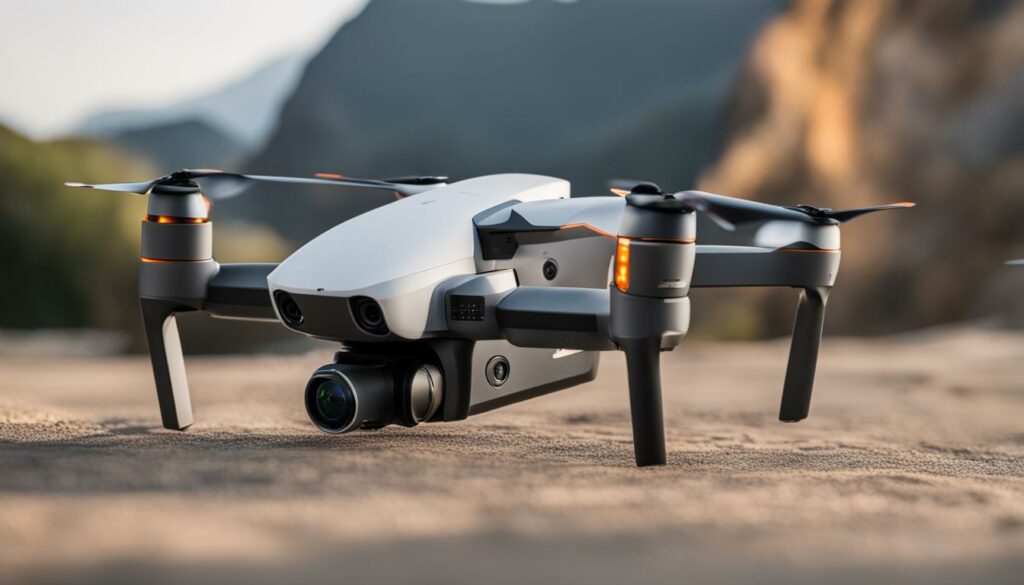
With their compact and lightweight design, the DJI Mini 2 SE and Mini 3 are perfect companions for anyone who wants to capture the beauty of their surroundings from a unique perspective. These drones can easily be taken on all your adventures, ensuring that you never miss a moment worth capturing.
Camera and Image Quality
The DJI Mini 2 SE and Mini 3 both come equipped with impressive cameras that capture stunning aerial footage. Let’s take a closer look at their specifications and image quality.
The Mini 2 SE features a 12MP camera with a 1/2.3-inch CMOS sensor. It is capable of shooting 2.7k HD videos, providing sharp and detailed footage. With its 3-axis gimbal, the Mini 2 SE ensures stable and smooth footage, even in windy conditions. The camera also offers a variety of shooting modes, including QuickShots for easy and creative content creation.
On the other hand, the Mini 3 takes it up a notch with its 48MP camera and 1/1.3-inch CMOS sensor. This larger sensor allows for better light sensitivity and improved image quality, especially in low-light conditions. The Mini 3 can capture breathtaking 4K HDR videos, providing vibrant colors and enhanced dynamic range. It also features a dual native ISO, which reduces noise and improves image clarity in various lighting situations.
Both drones offer impressive image stabilization and advanced features such as zoom and panorama mode. However, the Mini 3’s higher resolution and larger sensor give it the edge when it comes to capturing incredibly detailed and cinematic footage.

Camera Specifications
| Specification | DJI Mini 2 SE | DJI Mini 3 |
|---|---|---|
| Camera Resolution | 12MP | 48MP |
| Camera Sensor | 1/2.3-inch CMOS | 1/1.3-inch CMOS |
| Video Resolution | 2.7k HD | 4K HDR |
| Gimbal Stabilization | 3-axis | 3-axis |
| Zoom | Yes | Yes |
| Features | QuickShots, Panorama mode | QuickShots, Panorama mode, Vertical mode |
Obstacle Avoidance
When it comes to drone safety and adhering to drone regulations, obstacle avoidance is a crucial feature. Both the DJI Mini 2 SE and Mini 3 are equipped with obstacle sensors, ensuring a safer flying experience. However, there are some differences in their obstacle-avoidance capabilities.
The Mini 2 SE utilizes downward obstacle avoidance sensors, which enable it to detect obstacles when landing. This feature is particularly useful in outdoor environments where there may be uneven terrain or objects that could impede the drone’s landing process.
On the other hand, the Mini 3 takes obstacle avoidance to the next level with its advanced dual-vision sensors. In addition to downward obstacle avoidance, the Mini 3 is equipped with forward and backward sensors, allowing it to detect obstacles in real time and navigate through complex environments with ease. This enhanced obstacle avoidance system provides an added layer of safety and peace of mind, especially when flying in challenging or crowded areas.
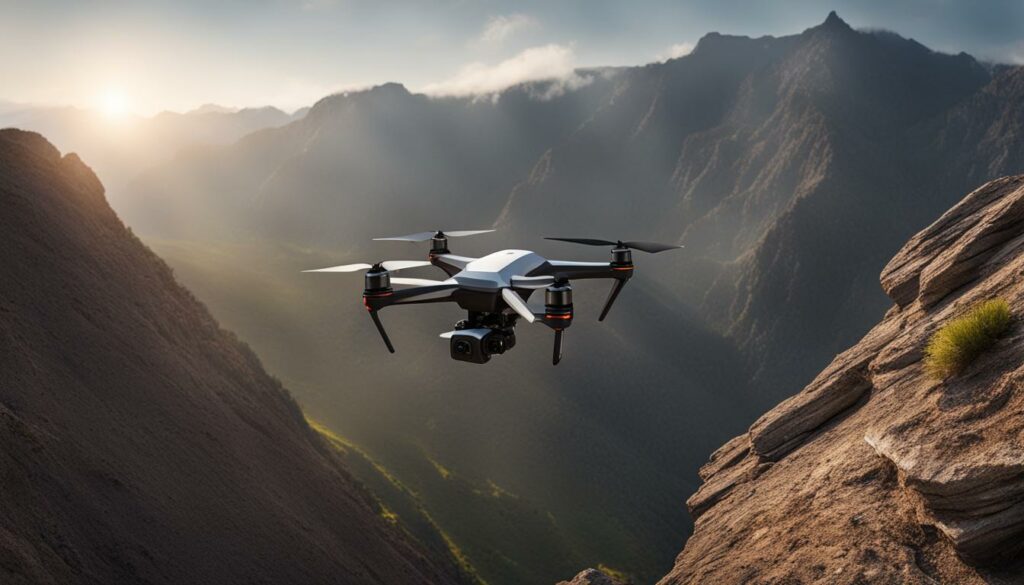
Table: Obstacle Avoidance Comparison
| DJI Mini 2 SE | DJI Mini 3 | |
|---|---|---|
| Obstacle Avoidance Sensors | Downward sensors | Forward, backward, and downward dual-vision sensors |
| Real-time Obstacle Detection | No | Yes |
| Complex Environment Navigation | No | Yes |
As seen in the table above, the Mini 3 offers a more comprehensive obstacle avoidance system compared to the Mini 2 SE. This makes it the preferred choice for those who prioritize safety and want advanced obstacle-detection capabilities. Whether you’re flying in a crowded urban environment or exploring challenging natural landscapes, the Mini 3’s obstacle avoidance features provide added confidence and allow you to focus on capturing breathtaking aerial footage.
Section 5: Transmission Range
The DJI Mini 2 SE and Mini 3 both offer impressive wireless transmission capabilities, allowing you to capture and view footage in real time. With the help of the DJI Fly app, you can easily connect your smartphone or the included remote controllers to these drones for a seamless flying experience.
The Mini 2 SE and Mini 3 utilize OcuSync 2.0 technology, which enables them to transmit HD video up to a range of 10 kilometers. This long-distance transmission range ensures that you can explore and capture footage from various perspectives without worrying about losing connection.
On the other hand, the Mini 3 Pro takes it a step further with OcuSync 3.0, which extends the transmission range to an impressive 12 kilometers. This means you can push your aerial photography and videography to new heights, covering greater distances and exploring more remote locations.

Remote Controllers and Remote ID
Both the Mini 2 SE and Mini 3 come with the DJI RC-N1 controller, which provides a reliable and intuitive interface for piloting the drones. The controller enhances the overall flying experience, giving you precise control over the drone’s movements and features.
It’s worth noting that the DJI Mini 3 Pro also supports the DJI RC controller, providing users with options when it comes to controlling their drone. The inclusion of two different remote controllers gives you the freedom to choose the one that best suits your preferences and needs.
Additionally, both drones comply with Remote ID regulations, ensuring that your flights are in line with local laws and promoting safety and accountability in the airspace.
| Mini 2 SE | Mini 3 | Mini 3 Pro | |
|---|---|---|---|
| Wireless Transmission | Up to 10km | Up to 10km | Up to 12km |
| Transmission Quality | HD Video | HD Video | Uninterrupted 1080p/30fps |
| Supported Controllers | DJI RC-N1 | DJI RC-N1 | DJI RC-N1, DJI RC |
| Remote ID Compliance | Yes | Yes | Yes |
Flight Time and Battery Options
When it comes to drone performance, flight time is an important factor to consider. Longer flight time means more time in the air, allowing you to capture breathtaking aerial footage without interruptions. The DJI Mini 2 SE offers a maximum flight time of 31 minutes with its Intelligent Flight Battery. This extended flight time allows for more exploration and creativity during your drone flights.
On the other hand, the DJI Mini 3 takes flight time to the next level. With the Intelligent Flight Battery, it can stay airborne for up to 38 minutes. This additional flight time gives you even more opportunities to capture stunning shots and videos from the sky. But that’s not all, the Mini 3 also offers an option for the Intelligent Flight Battery Plus, which extends the flight time to an impressive 51 minutes.
In terms of battery options, both drones provide versatility and convenience. The Intelligent Flight Batteries are easy to swap, allowing you to quickly replace a depleted battery with a charged one and continue flying. Additionally, the batteries are rechargeable, so you can power them up for your next adventure. However, it’s important to note that using the Battery Plus option exceeds the 250g weight limit, which may require registration depending on your location and local regulations.
| DJI Mini 2 SE | DJI Mini 3 | |
|---|---|---|
| Maximum Flight Time | 31 minutes | 38 minutes (Intelligent Flight Battery) 51 minutes (Intelligent Flight Battery Plus) |
| Battery Options | Intelligent Flight Battery | Intelligent Flight Battery Intelligent Flight Battery Plus (exceeds 250g weight limit) |
| Charging Time | Approximately 90 minutes | Approximately 150 minutes (Intelligent Flight Battery) Approximately 165 minutes (Intelligent Flight Battery Plus) |

Charging Time
In terms of charging time, the DJI Mini 2 SE takes approximately 90 minutes to fully charge its Intelligent Flight Battery. On the other hand, the Mini 3 requires approximately 150 minutes to charge the Intelligent Flight Battery and approximately 165 minutes for the Intelligent Flight Battery Plus.
It’s important to consider charging time when planning your drone flights. It’s always a good idea to have spare fully charged batteries on hand to ensure uninterrupted flying time. This allows you to make the most of your drone’s capabilities and capture all the shots you desire.
With the DJI Mini 2 SE and Mini 3, you have options when it comes to flight time and battery life. Whether you choose the Mini 2 SE for its 31-minute flight time or the Mini 3 for its extended 38-minute flight time (or even up to 51 minutes with the Battery Plus option), you can expect impressive performance and ample opportunity to capture stunning aerial footage.
Intelligent Flight Modes
The DJI Mini 2 SE and Mini 3 both offer a range of intelligent flight modes designed to enhance your aerial photography and videography. These modes automate certain flight patterns and capture techniques, allowing you to create professional-looking shots with ease. Let’s take a closer look at some of the key intelligent flight modes available on these drones.
QuickShots
One of the standout features of both the Mini 2 SE and Mini 3 is the QuickShots mode. With QuickShots, you can capture cinematic videos with just a few taps on your smartphone. The drone will automatically fly a pre-programmed flight path while recording, resulting in stunning aerial footage. Some of the QuickShots options include Dronie, Circle, Helix, and Rocket, each offering a unique perspective and artistic effect.
Mastershots
In addition to QuickShots, the Mini 2 SE and Mini 3 also feature Mastershots, an intelligent flight mode that uses advanced algorithms to automatically capture a series of photos and videos. Once you select a subject, the drone will fly and record footage from different angles and perspectives. After the flight, the DJI Fly app will generate a short video using the captured footage, complete with transitions and effects. Mastershots are a great way to effortlessly create dynamic and engaging content.
ActiveTrack
Another intelligent flight mode available on the Mini 2 SE and Mini 3 is ActiveTrack. With ActiveTrack, you can select a subject on your smartphone screen, and the drone will autonomously follow and keep the subject in focus. This is particularly useful when tracking moving objects or people, allowing you to capture smooth and professional-looking footage. Whether you’re filming a sports activity or simply want to capture a dynamic shot, ActiveTrack is a valuable tool.
Overall, the intelligent flight modes on the DJI Mini 2 SE and Mini 3 provide a range of creative options for capturing unique and impressive aerial footage. Whether you’re a beginner or an experienced drone pilot, these modes can elevate your photography and videography to new heights.
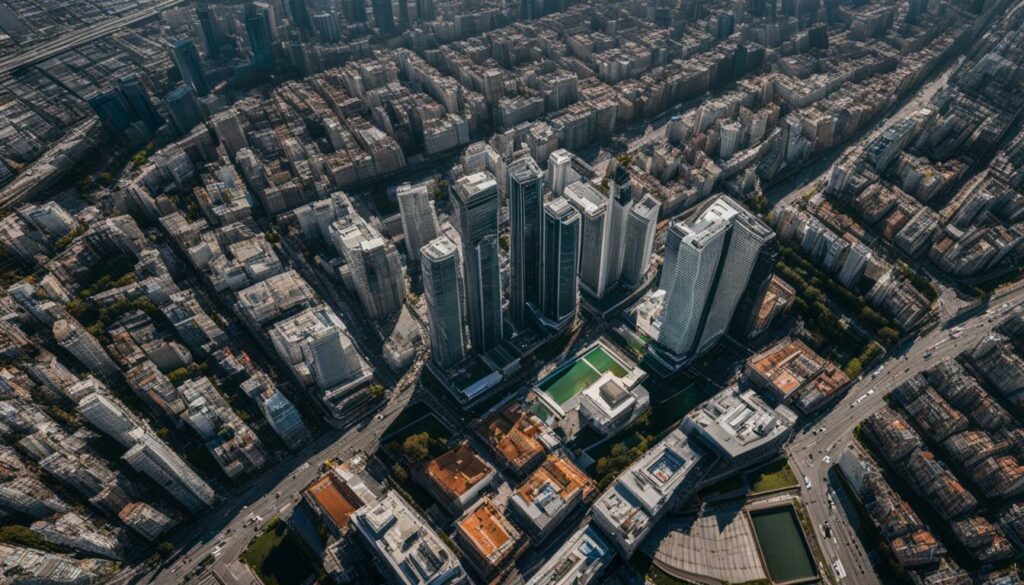
Pricing and Availability
When it comes to purchasing a drone, the price and availability are important factors to consider. The DJI Mini 2 SE and Mini 3 Pro offer different features and capabilities at varying price points, making it essential to weigh your options before making a decision.
The DJI Mini 2 SE is the more affordable option, with a starting price of CAD $429 / US $339. This compact drone is perfect for beginners or those on a budget who still want to enjoy the benefits of aerial photography and videography. Despite its lower price, the Mini 2 SE doesn’t compromise on quality, providing an excellent camera and decent flight time.
On the other hand, the DJI Mini 3 Pro offers improved features and capabilities at a higher price point. Starting at CAD $589 / US $469, this drone caters to individuals who prioritize image quality, longer flight time, and advanced features such as obstacle avoidance. The Mini 3 Pro is perfect for those who want to take their aerial filming and photography to the next level.
Important Notice: Prices may vary and are subject to change without notice.
| DJI Mini 2 SE | DJI Mini 3 Pro | |
|---|---|---|
| Starting Price | CAD $429 / US $339 | CAD $589 / US $469 |
| Camera | 12MP | 48MP |
| Flight Time | Up to 31 minutes | Up to 38 minutes |
| Obstacle Avoidance | Downward sensors | Forward, backward, and downward dual-vision sensors |
Both the DJI Mini 2 SE and Mini 3 Pro are currently available for purchase, allowing you to choose the drone that best suits your needs and budget. Whether you’re a casual drone user or a professional looking for high-quality footage, DJI offers options for everyone.
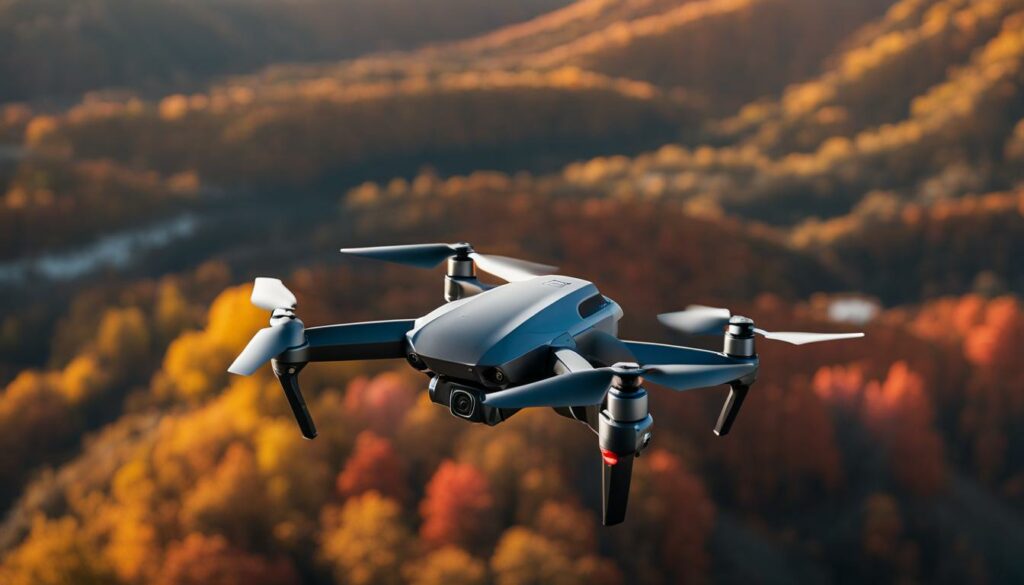
DJI Mini 2 SE vs Mini 3: Capturing Your World in Detail
When it comes to choosing between the DJI Mini 2 SE and the Mini 3, there are several key differences to consider. Both drones are part of DJI’s micro drone series and offer compact designs, lightweight construction, and excellent portability. However, the Mini 3 boasts superior camera capabilities, longer flight times, and advanced features like obstacle avoidance.
Camera and Image Quality
One of the main distinctions between the Mini 2 SE and the Mini 3 is their camera specifications. The Mini 2 SE features a 12MP camera with a 1/2.3-inch CMOS sensor, allowing for high-quality image capture and 2.7k HD video recording. On the other hand, the Mini 3 is equipped with a 48MP camera and a larger 1/1.3-inch CMOS sensor, delivering exceptional image resolution and the ability to record 4K HDR videos. If you prioritize image quality and want the ability to capture detailed footage, the Mini 3 is the clear choice.
Obstacle Avoidance
Another notable difference between the Mini 2 SE and the Mini 3 is their obstacle-avoidance capabilities. While both drones feature downward obstacle sensors, the Mini 3 takes it a step further with forward, backward, and downward dual-vision sensors. This advanced obstacle avoidance system provides real-time detection, allowing the Mini 3 to navigate complex environments more effectively. If you plan on flying in challenging or crowded locations, the Mini 3’s obstacle avoidance system can greatly enhance your flight experience and ensure safety.
Flight Time and Battery Options
If longer flight times are a priority for you, the Mini 3 offers a significant advantage. With its Intelligent Flight Battery, the Mini 3 can stay in the air for up to 38 minutes, compared to the Mini 2 SE’s maximum flight time of 31 minutes. Additionally, the Mini 3 is compatible with the Intelligent Flight Battery Plus, which extends the flight time even further to up to 51 minutes. It’s important to note that using the Battery Plus option exceeds the 250g weight limit and requires registration.
| Feature | DJI Mini 2 SE | DJI Mini 3 |
|---|---|---|
| Camera | 12MP, 2.7k HD | 48MP, 4K HDR |
| Obstacle Avoidance | Downward Sensors | Forward, Backward, and Downward Dual-Vision Sensors |
| Flight Time | 31 minutes | 38 minutes (Up to 51 minutes with Battery Plus) |
Ultimately, the decision between the DJI Mini 2 SE and the Mini 3 comes down to your specific needs and budget. If you’re a beginner or looking for a more budget-friendly option, the Mini 2 SE provides a solid set of features and capabilities. However, if you require higher image quality, longer flight times, and advanced features like obstacle avoidance, the Mini 3 is the superior choice. Consider your priorities and use this comparison to make an informed decision on which drone best suits your needs.
Which drone to choose – DJI Mini 2 SE or Mini 3?
- The DJI Mini 2 SE is a more affordable option suitable for beginners or those on a budget.
- The DJI Mini 3 offers superior image quality, longer flight times, and advanced features like obstacle avoidance.
- Consider factors such as camera capabilities, flight time, and obstacle avoidance when making your choice.
Conclusion
After comparing the DJI Mini 2 SE and Mini 3, it’s clear that both drones have their own strengths and are designed to cater to different needs. If you’re a beginner or on a budget, the Mini 2 SE is an excellent choice. It offers a compact design, decent camera, and good flight time, making it suitable for casual users who want to explore aerial filming.
On the other hand, if you prioritize image quality, longer flight time, and advanced features, the Mini 3 is the superior option. With its larger camera sensor size, 4K HDR video recording, and dual native ISO, the Mini 3 delivers stunning visuals and performs exceptionally well in low-light conditions. It also has an extended flight time, advanced obstacle avoidance, and various intelligent flight modes which are ideal for travel photography and social media content creation.
When choosing between the two models, consider factors such as camera capabilities, flight time, transmission range, and intelligent flight modes according to your specific requirements. Whether you’re looking for a budget-friendly option or a more professional drone for high-quality footage, DJI offers a range of products to suit your needs in aerial filming. Explore the Mini 2 SE or the Mini 3 and elevate your drone photography and videography to new heights.
FAQ
What is the difference between the DJI Mini 2 SE and Mini 3?
The DJI Mini 2 SE and Mini 3 have different cameras, features, and prices. The Mini 2 SE has a 12MP camera and can capture 2.7k HD videos, while the Mini 3 has a 48MP camera and can record 4K HDR videos. The Mini 3 also offers extended flight time, advanced obstacle sensors, and improved transmission range.
What are the dimensions of the DJI Mini 2 SE and Mini 3?
The Mini 2 SE has dimensions of 138x81x58 mm (LxWxH) when folded, while the Mini 3 has dimensions of 148x90x62 mm (LxWxH) when folded. Both drones are compact and portable.
Do I need to register the DJI Mini 2 SE and Mini 3?
Both the Mini 2 SE and Mini 3 weigh less than 250 grams, which makes them exempt from registration and drone pilot certification requirements.
What are the camera specifications of the DJI Mini 2 SE and Mini 3?
The Mini 2 SE features a 12MP camera with a 1/2.3-inch CMOS sensor, while the Mini 3 boasts a 48MP camera with a 1/1.3-inch CMOS sensor. The Mini 3 offers higher resolution and better image quality.
Do the DJI Mini 2 SE and Mini 3 have obstacle avoidance sensors?
Both drones have downward obstacle avoidance sensors to detect obstacles when landing. The Mini 3 Pro also has forward, backward, and downward dual-vision sensors for real-time obstacle detection.
What is the transmission range of the DJI Mini 2 SE and Mini 3?
Both drones use OcuSync 2.0 for HD video transmission, with a range of up to 10km. The Mini 3 Pro features OcuSync 3.0, which extends the transmission range to up to 12km.
How long is the flight time of the DJI Mini 2 SE and Mini 3?
The Mini 2 SE has a maximum flight time of 31 minutes with its Intelligent Flight Battery. The Mini 3 offers an extended flight time of 38 minutes with the Intelligent Flight Battery and up to 51 minutes with the Intelligent Flight Battery Plus (requires registration).
What intelligent flight modes are available on the DJI Mini 2 SE and Mini 3?
Both drones offer intelligent flight modes such as QuickShots for automatic cinematic videos, Panorama mode, and precise hovering. The Mini 3 also includes true vertical shooting mode for vertical filming.
How much do the DJI Mini 2 SE and Mini 3 cost?
The DJI Mini 2 SE starts at CAD $429 / US $339, while the Mini 3 starts at CAD $589 / US $469.
Which drone should I choose, the DJI Mini 2 SE or Mini 3?
The choice between the Mini 2 SE and Mini 3 depends on your specific needs and budget. The Mini 2 SE is more affordable and suitable for beginners or those on a budget. The Mini 3 offers better image quality, longer flight time, and advanced features, making it a great choice for those who prioritize these factors.



